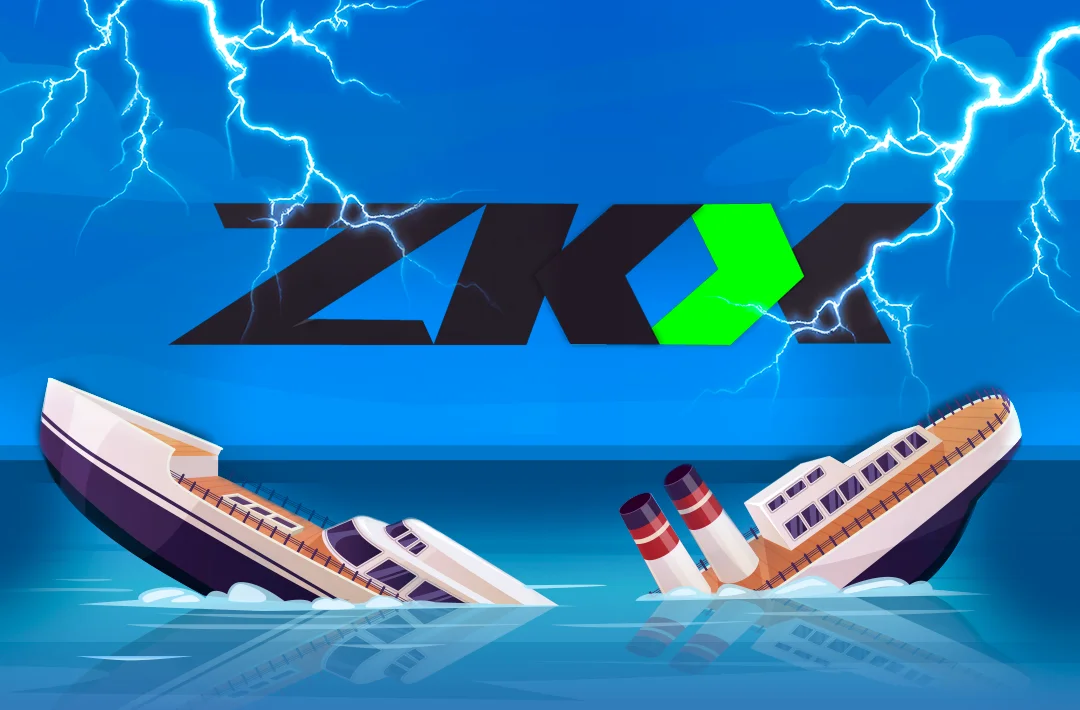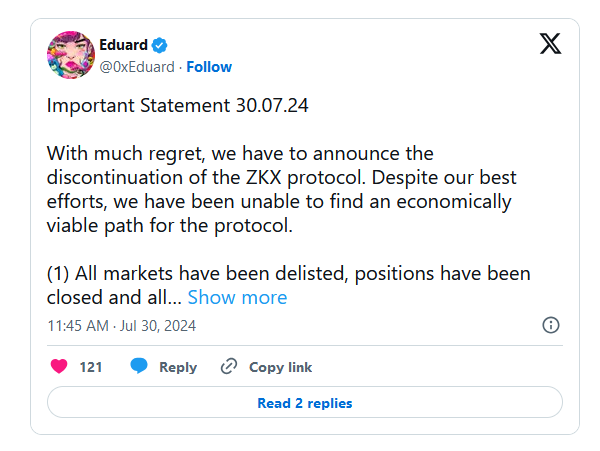StarkNet network’s leading protocol announces the closure due to low activity
The ZKX team urged users to withdraw funds by the end of August

30.07.2024 - 16:06
200
3 min
0
What’s new? The team of the ZKX derivatives protocol at StarkNet has announced that the project is shutting down due to low user activity, insufficient revenue to cover operating expenses, and a declining native token rate. Previously, ZKX as a leading project in the StarkNet ecosystem had raised venture capital from more than a dozen companies including StarkWare, Amber, HTX, Cryptocom, and Hashkey.
What else is known? Over the past 30 days, the value of the ZKX native token has fallen by 75%, a daily drop of 38%. The asset is trading at $0,02265.
As part of the wind-down, the team delisted all markets and closed all positions, and returned funds to users’ trading accounts. Customers can now transfer funds from trading accounts to ZKX’s main non-custodial accounts, which are wallets on StarkNet. Using the Starkway bridge, they can move assets to the main Layer 1 (L1) blockchain.
The developers recommended withdrawing funds and leaving STRK token requests (tokenize tokens) by the end of August. The asset allocation will continue after the close of business on September 1.
ZKX noted minimal audience engagement, resulting in only a few users receiving rewards in STRK and ZKX coins. The drop in activity led to a decrease in trading volumes and, as a result, in the revenue of the project itself, which did not even fully cover the costs of using cloud servers, not to mention staff salaries and other operating expenses.
Separately, it is noted that providing sustainable support for the protocol is hindered by the low cost of the native token. The developers recognized that the launch of the asset (token generation event (TGE) did not meet expectations. Large holders of the asset are withdrawing funds, which contributes to the fall of the rate in the context of low demand.
The project was launched in 2021 with the goal of providing users with the benefits of centralized and decentralized exchanges (CEX/DEXs) in a single platform, but the team said the concept has failed to live up to expectations:
“It has been exceptionally challenging to sustain and engage with a DeFi community in an industry that’s heavily driven by token incentives and airdrop value extraction. The airdrop and token model for dApps no longer proves effective. We’ve faced increasing pressure and, at times, felt as though we were under duress from community members. In recent months, the volume of threats and abuse has surged, alongside persistent hacking and scam attempts,” said the project's founder under the nickname 0xEduard.
Despite this, the team explored the possibility of adding support for other networks, but concluded that doing so would require rewriting and reliability testing a significant portion of the code base, which is costly.
Useful material?
Trends
As of January 21, the capitalization of this sector of the crypto market exceeds $519 billion
Jan 21, 2025
Market
The platform generated $9,5 million in revenue during the same time
Jan 20, 2025
Market
Shares of the Trust are designed to track the market price of XRP with fewer fees and expenses
Jan 17, 2025
Market
The asset will allow USDT to move seamlessly between different blockchains
Jan 17, 2025
Market
Earlier, the community criticized the project for its lack of transparency, which led to a sharp drop in the HYPE token price
Jan 8, 2025
Market
Rising US Treasury bond yields are negatively affecting risk assets
Jan 8, 2025










 Telegram
Telegram  Twitter
Twitter